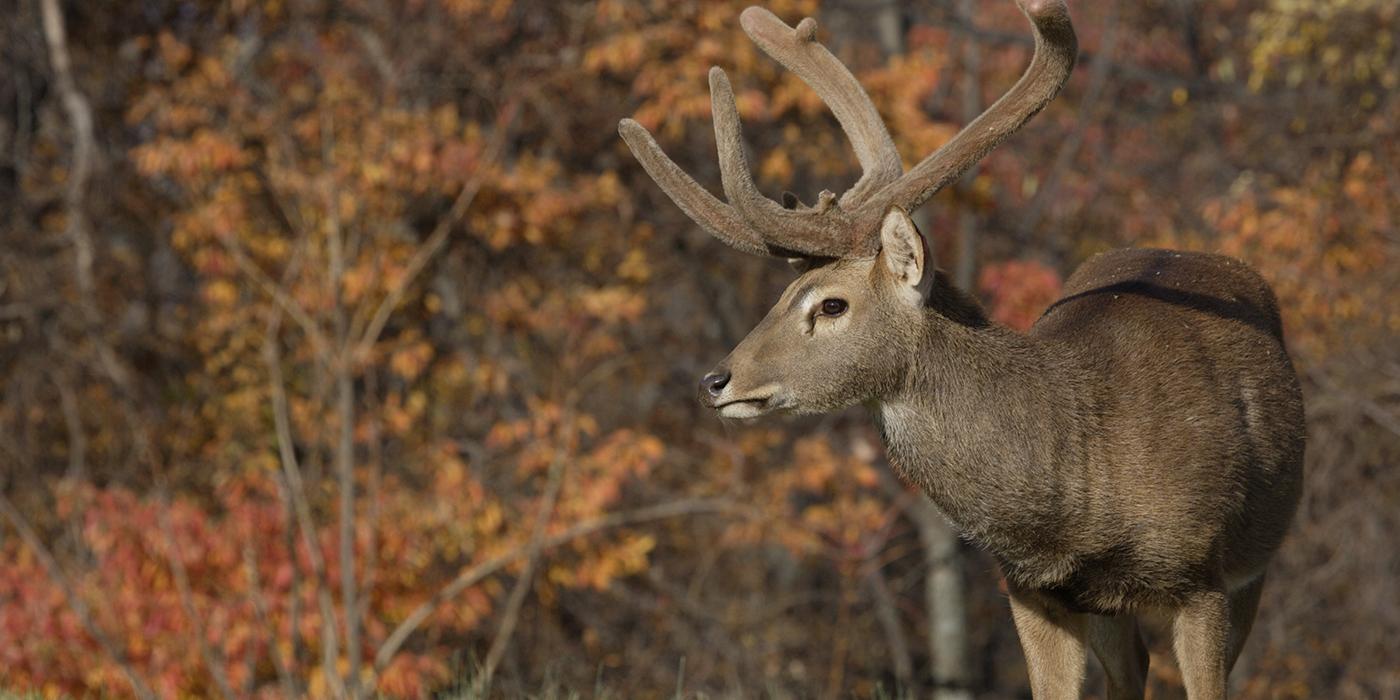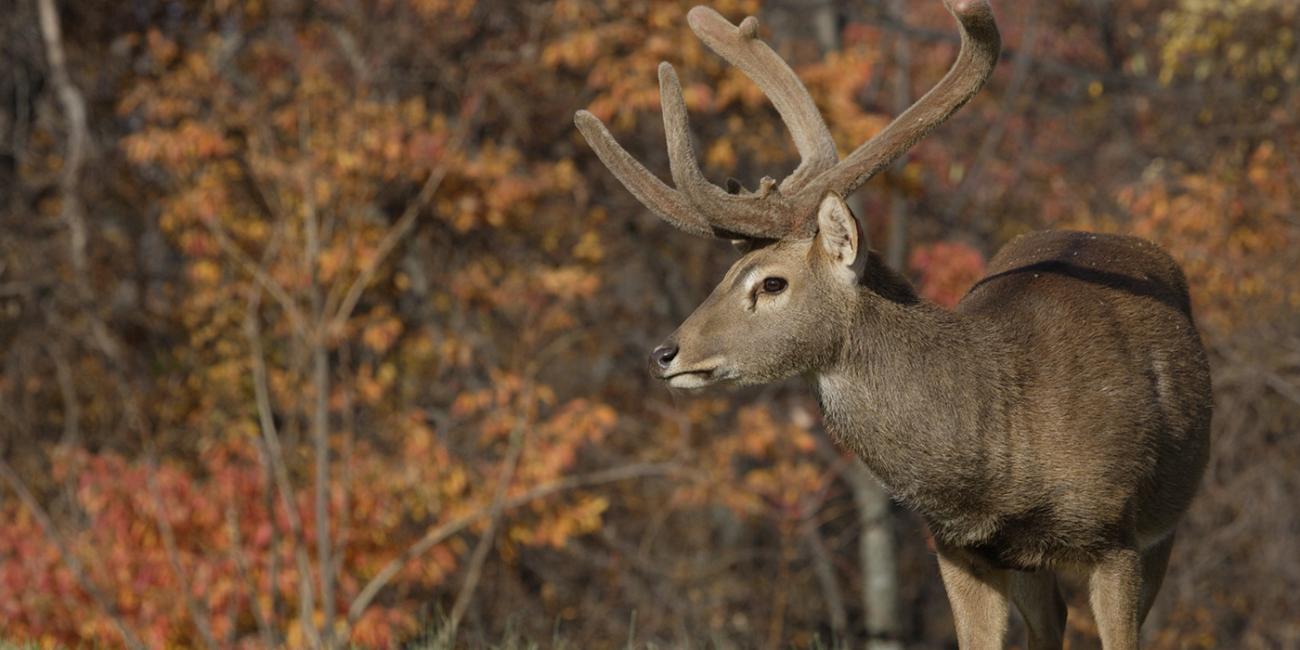Eld's Deer Conservation
There are more than 65 species of deer in the world and many are endangered, especially large deer that live in open forests or grasslands. One such species in the brow-antlered deer, or Eld’s deer (Rucervus eldii), found in Southeast Asia. Working with collaborators in host countries, the Conservation Ecology Center strives to bring Eld's deer off the endangered species list by increasing knowledge about the species and through conservation action.
CEC has been involved with Eld’s deer conservation since the mid-1990s, first in Myanmar, and then in India, Thailand, Laos, and Cambodia. Eld's deer prefer dry, open forests with monsoon rains. Due to expanding human populations, these forests have largely been replaced by rice paddies. CEC researchers have worked to conserve forests, increase protected areas and survey for remnant populations of deer. Their research helps to inform policy makers, such as through the creation of an Eld's deer conservation plan for the Myanmar government. They also support programs to reintroduce captive-born deer into parks in Thailand.












